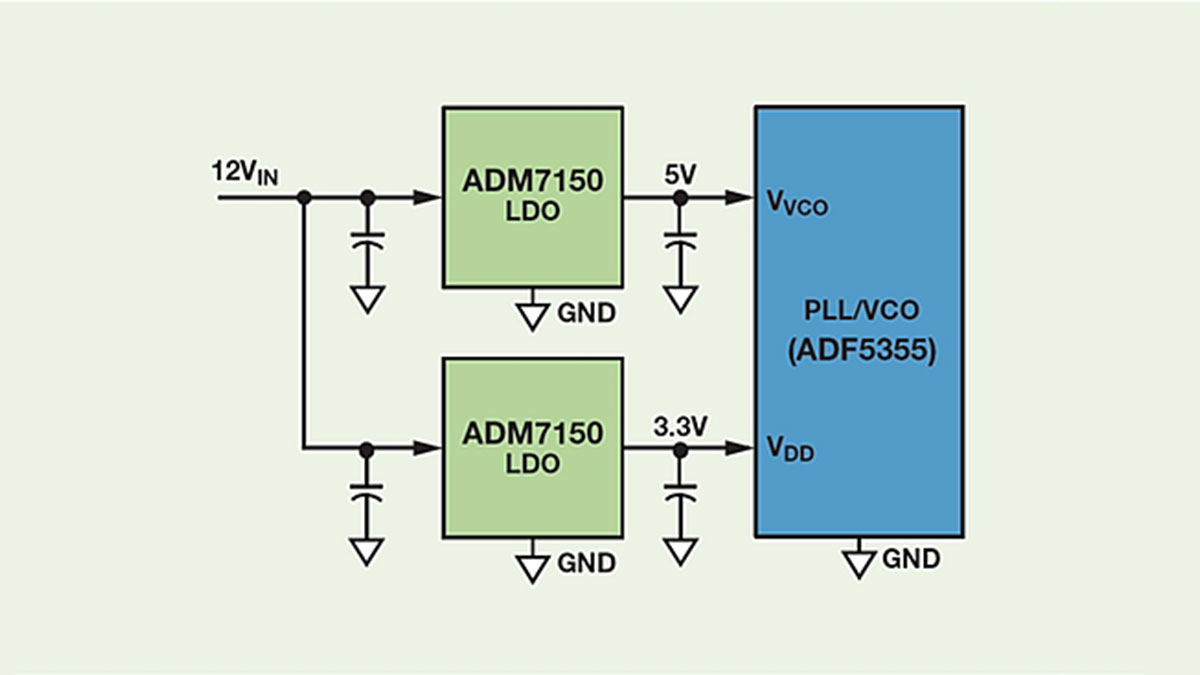Wideband communication systems usually require an ultra-low noise regulator to power the VCOs and PLLs. The regulator must also be able to reject any ripple presented at its input. In a typical system, an ac input is converted to an isolated dc supply rail, –48-V, for example. This rail is then converted to an isolated 12-V or 5-V system rail that powers the main components in the communication system.

This 12-V or 5-V system rail is generated by inductive switching elements that create ripple and noise on the rail. To provide a clean power rail, an ultralow-noise regulator is required to generate the 5-V, 3.3-V or 2.5-V rail used to power the wideband PLL and VCO. Any noise or ripple present on the 5-V, 3.3-V or 2.5-V rail will degrade the performance of the PLL or VCO.
The fixed-output ADM7150 and adjustable-output ADM7151 ultralow-noise linear regulators for RF signal devices operate from 4.5 V to 16 V, provide up to 800 mA of output current, and support output voltages from an input voltage of 1.5 to 5.0 V. The LDOs achieve 1.4-nV/√Hz output noise spectral density (NSD) from 10 kHz to 1 MHz, significantly reducing VCO phase noise in point-to-point microwave radios, satellite communications, defense electronics, and other wideband systems. In addition, a user-adjustable capacitor can significantly reduce low-frequency noise (8 nV/√Hz at 100 Hz) for precision analog front-end measurement systems. The total solution size is only 7.62 mm × 5.21 mm.
For More Details: Product How-to: Ultra-low noise linear regulators for powering PLL/VCO and clocking ICs
